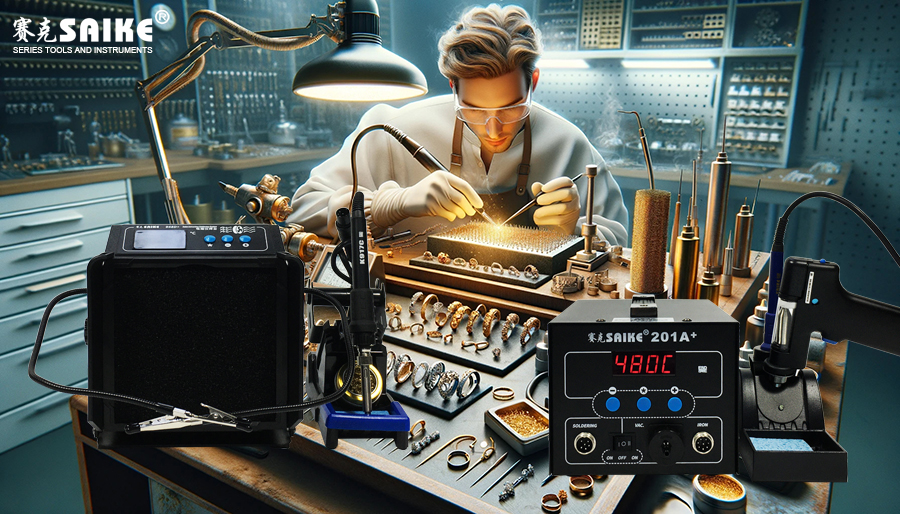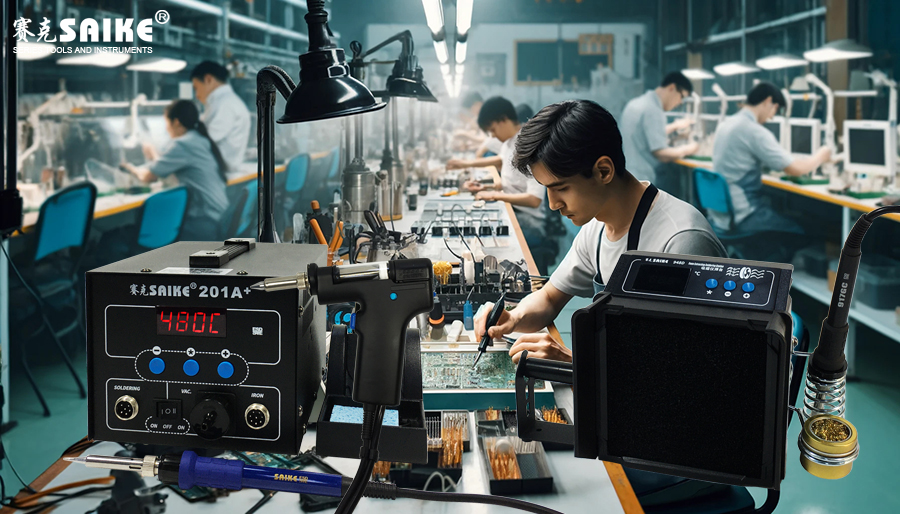
SK-YJ000HT-KP 100031
Jewelry soldering is a delicate craft involving metal joining techniques in jewelry making and repair. Compared to electronic or industrial soldering, jewelry soldering has its unique requirements and challenges, including the use of precious metals (such as gold, silver, and platinum), as well as dealing with often tiny and intricately shaped components. This article will explore the special requirements and best practices for soldering at a jewelry soldering station.
I. Selection of Soldering Materials
Jewelry soldering usually employs solders that are the same as or compatible with the metal of the piece, ensuring that the color and strength of the solder joint harmonize with the overall work.
– Gold solder: Often classified as low, medium, and high-temperature solders, the choice of which depends on the melting point of the piece and soldering temperature.
– Silver solder: Silver solders also come in different melting points, suitable for soldering silver jewelry.
– Platinum solder: Due to platinum’s extremely high melting point, the choice of solder is crucial to avoid damaging the jewelry during soldering.
II. Special Requirements for Soldering Stations and Soldering Irons
Jewelry soldering stations should feature precise temperature control, as jewelry materials are often sensitive to heat.
– Temperature precision: The soldering station must accurately control temperature to prevent overheating and wasting precious materials.
– Soldering iron tip selection: Fine soldering iron tips suitable for delicate operations should be chosen to accommodate the small solder joints in jewelry.
III. Soldering Environment
Jewelry soldering should be performed in a dry, dust-free environment to prevent metal oxidation and contamination.
– Clean workbench: Maintain a clean working environment to avoid substances that may contaminate the metal.
– Adequate lighting: Ensure sufficient illumination, as jewelry soldering requires precise manipulations.
IV. Safety Measures
As jewelry soldering often involves precious materials and high temperatures, safety measures are essential.
– Protective gear: Operators should wear appropriate protective glasses and heat-resistant gloves.
– Ventilation system: A good ventilation system aids in removing harmful fumes and gases produced during soldering.
V. Soldering Skills and Processes
Jewelry soldering demands a high level of craftsmanship and experience.
– Preparation before soldering: Thoroughly clean all soldering surfaces, using light grinding or polishing to remove oxide layers if necessary.
– Soldering process control: Use the right amount of solder to avoid overflow or solder balls. Apply sufficient heat to complete the soldering quickly, minimizing heat impact on surrounding materials.
– Cooling and cleaning: Allow natural cooling after soldering and use appropriate cleaners and tools to remove residues around the solder joint.
VI. Conclusion
Jewelry soldering at a soldering station is a craft that requires delicate handling and utmost focus. By choosing the right soldering materials, controlling the soldering environment, adopting adequate safety measures, and applying professional soldering techniques, the quality and efficiency of jewelry soldering can be significantly improved. Mastering these skills not only preserves and enhances the value of precious jewelry materials but also ensures the aesthetics and durability of jewelry products.


